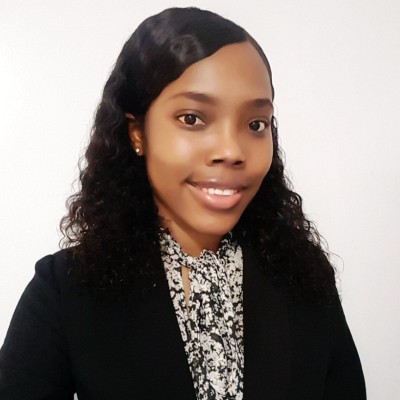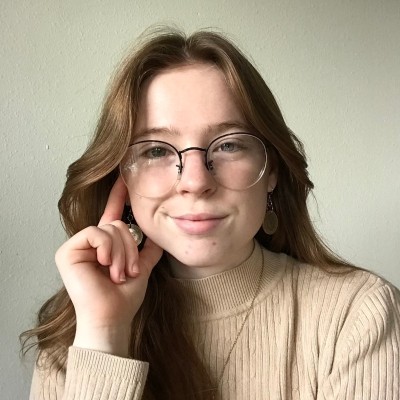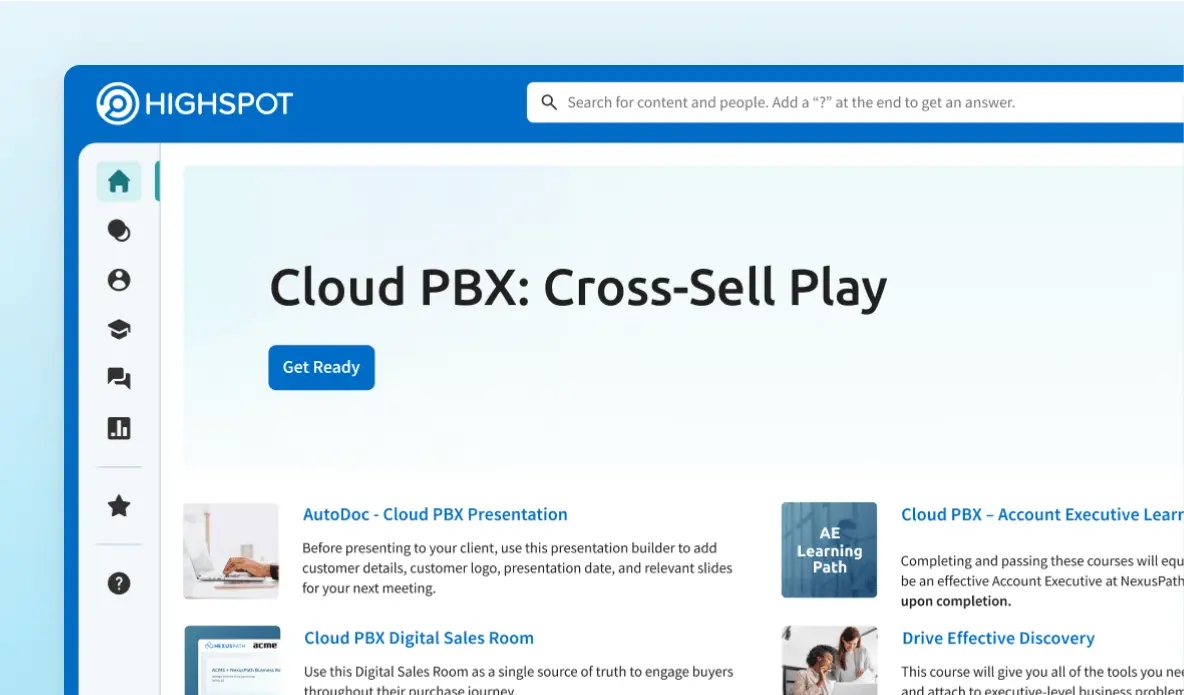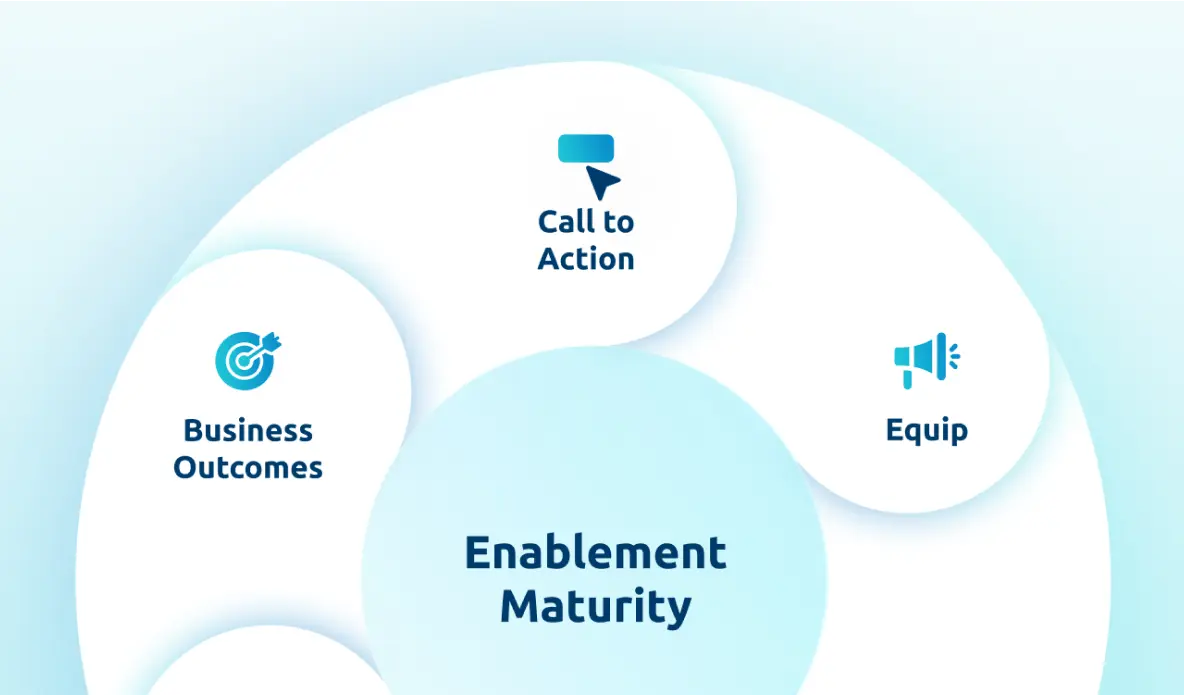According to research from Forrester, 70% of marketing content goes unused. So how can you effectively structure and govern your content to unlock its value and drive measurable business results?
Riley Rogers: Hi, and welcome to the Win-Win podcast. I’m your host, Riley Rogers. Join us as we dive into changing trends in the workplace and how to navigate them successfully.
Here to discuss this topic is Chanique James, marketing lead generation and enablement specialist at MSCI. Thank you so much for joining us, Chanique. To kick us off, I’d love if you could just start by telling us a little bit about yourself, your background, and your role.
Chanique James: Sure. Thank you so much for having me. I’m excited to be here.
I have several years of experience in brand and product marketing, focusing on promotions, trade marketing, and event management, as well as sales enablement. Over the years I’ve managed from product marketing initiatives across both B2B and B2C environments, developing integrated strategies that connect creativity, storytelling with measurable business outcomes.
I’ve always been passionate about connecting strategy with people and finding the balance between creativity, data, and impact. That perspective has shaped how I approach marketing and enablement today. In my current role, I focus on marketing, lead generation and enablement. Ensuring or grow to market teams have access to the right content at the right time, along with insights and tools to engage clients effectively.
I see my work as connecting digital strategy with operational excellence, bringing clarity, consistency and impact to how marketing and sales collaboration.
RR: Amazing. Well, from that background, it seems like there’s a lot of ground we could cover here. A lot of experience across a lot of different arenas that I’d love to dig into.
So let’s just start with maybe a bit of background on kind of the environment that you’re working in. So I know that MSCI provides a pretty broad range of services to the global investment community. So what are some of the unique challenges that your go-to market teams face when activating at scale across global regions? And then to your point, how does digital enablement help address them in global environment?
CJ: I believe that scale introduces complexity from different regulatory environments to language nuances and varying buyer expectations. Go to market teams face similar challenges across regions. They have to balance consistency, compliance, and connectivity.
Ensuring that messaging feels unified, yet relevant in diverse markets. Managing that balance requires both structure and flexibility, and that’s where digital enablement comes in. By centralizing content, data and workflows, digital enablement gives team visibility into what’s working and empowers them to adapt quickly.
These tools make it possible to deliver localized content and timely materials to client facing teams around the world, helping them navigate campaigns efficiently as well as, I would say more confidently.
RR: Amazing. It sounds like you’ve got a lot on your plate, so I’m excited to dig into kind of the strategies for approaching those obstacles and those challenges of scale beyond kind of some of the unique obstacles that you encounter as a global organization, as a financial services organization, I’d like to focus on some that pretty much every organization is gonna face, which is the disconnect across the go to market organization.
So as a marketing leader. What go-to-market initiatives are you focused on to better align your marketing and your sales teams?
CJ: For me, I would say alignment starts with visibility and connection. It’s really about making sure marketing and sales teams are working from the same playbook as well as working together so that content, messaging and data tell one cohesive story.
That alignment creates focus and efficiency. It means simplifying access to marketing and enablement tools, making insights actionable, and keeping collaboration front and center with both sides. That is marketing and sales are connected around shared goals and clear communication. Everything else from productivity to performance naturally improves.
RR: Absolutely. And I think one of those key levers that you can pull on is the content that you’re sharing across. When it’s well managed and well socialized, you unlock really strong cross-functional collaboration when it’s not, we know the consequences in your work. One of those key focuses is content management.
So from your experience, what are some of the common pitfalls that financial services organizations like yours might face when developing and managing content, and then how can maybe they avoid them?
CJ: I would say possibly a big, or the biggest challenge that we have is fragmentation content often live in silos owned by different teams, sometimes with different goals that can lead to duplication, outdated materials, or even inconsistencies in messaging and compliance.
Key, however, is strong governance and collaboration, establishing clear processes around how content is created, reviewed, distributed, and even maintaining open feedback loop across marketing, compliance, and sales can actually help us ensure that every piece of content is purposeful, consistent, and UpToDate in addition.
I believe that when organizations take that structured approach, they move from managing content reactively to managing more strategically, and this can actually turn into a real advantage for the business.
RR: Can you talk to me a little bit about like the value of that strategic approach as opposed to a like reactive approach?
CJ: So I ultimately believe that in terms of content management, you really need to think strategically, how are teams accessing it? How are they using it, and also is it relevant for your market? I believe that one of the key things that we can do is always leverage the data. Enablement tools allow us to get a lot of insights not just into client engagement with content, but also how our sales team are actually using it.
When we actually leverage that data, that helps us to drive strategy and that strategy actually helps us improve over time. The content that we continuously create and the content that we also continuously share with our clients. And I think that’s a big portion. That’s a big part of actually making sure that we’re not just reacting to things, not be being used well, but also strategically ensuring that moving forward when we see certain metrics, we use that to create better content, to have better client relationships and conversations for our sales team.
RR: Yeah, I think that’s such a great perspective. I think sometimes as marketers, you get really caught up in like what you’re excited to create, and sometimes you have to take that step back and go, what is actually useful? What are our reps like, what are our clients like? And how can I lean into that? So I, I love that you’re taking that approach.
Um, and I know good governance and good content creation strategies can be really, really crucial, but they can also be really difficult to maintain. So I’d like to talk a little bit, maybe about. The impact of taking the time to focus in on that. So what do you see as the value of having compliant up-to-date content and how does that enable reps to succeed in the field?
CJ: Sure. I believe that having quality and compliant content is very essential, and also having enablement platforms actually serve as a great deal in terms of ensuring that the content is easy for sales reps to access. Enablement platforms are transformative because they turn content from status assets into living resources.
They centralized content distribution, enforce compliance, and provide clear insights into engagement and performance. For financial organizations where accuracy and timing are everything, this gives our sales team confidence that what they’re sharing with clients have been approved and is also relevant.
So I would say that it’s not just about access, it’s really about assurance, agility, and trust.
RR: I think that that last call out is so key because it’s ultimately just about trust, right? Your reps need to know that your content is reliable and aligned to their needs. Your business needs to know that you’re compliant and aren’t gonna create unnecessary risk that nobody wants to deal with.
If you can prove that and build that brand of trust. You’re set. And maybe that’s kind of how you’ve achieved such a high recurring usage rate in Highspot. So can you walk me through, in addition to some of the governance pieces that we’ve been talking about, but what best practices have been effective in helping you drive strong adoption?
CJ: Adoption thrives on relevance and experience. We treat our environment as more than a repository. It’s really a dynamic workspace that grows with our teams. We’re focused on building a clear content structure so users can easily find what they need, and we partner with champions who will help drive awareness, as well as share best practices.
We also offer focus training and share success stories with our new users. That highlights real results. In addition, we integrate with platforms such as Salesforce so that the tool actually fits naturally into the workflows of our sales teams. I think that when people see genuine value in how it helps them, it actually allows them to work smarter and adoption really naturally flows from that.
RR: I love touching on the ecosystem piece and creating an environment that works for people. ’cause a lot of the time when enablement feels like a mandate or it’s not built with workflows in mind. You don’t see that adoption, so love to hear the best practices that are working for you, but I know that it’s not just adoption that’s going well for you and the team.
We’ve heard some really great things about the work that you’re doing, so I’d be really curious to know, since implementing Highspot, what key results have you achieved and are there any particular wins or achievements that you’re super proud of?
CJ: I think one of the most exciting things have been our ability to see how our approach has truly transformed the way our team operates.
One major impact and achievement has been turning the platform into, as I mentioned before, a strategic activation hub. We’ve streamlined how content is distributed, tracked, measured, which significantly, adoption reads and overall content utilization. So we’ve seen measurable improvements in both time savings as well as content engagement.
Our sales teams now have easier access to tailored playbooks, helping them move faster and stay aligned across functions. What I’m most proud of, however, and honestly continuously working on, is how this has strengthened collaboration between our functions such as marketing, sales, and even our product teams.
I believe that this has actually helped us to turn our content and digital strategy into a true connector across the business.
RR: I think that’s a fantastic achievement to say that, you know, we’ve created a through line across the organization that is now our source of truth and our source of communication.
That’s fantastic. So have to commend you and the team for that work. We’ve talked about what the challenges are, how you’re solving them, what you’ve achieved so far, but let’s maybe talk a little bit about the future. So I know that MSCIs tagline is Clarity drives action. Thinking about that philosophy, how does that guide your approach to strategy and your role?
And then what outcomes are you looking to drive next?
CJ: Clergy drives action resonates deeply with my approach to marketing, digital strategy, and enablement. For me, it’s about simplifying complexity and making information accessible, actionable, and meaningful so that insights can truly drive impact.
Looking ahead, I’m focused on advancing data-driven personalization and using insights to deliver more connected high value experiences for both internal teams and clients. The goal is really to keep evolving how we connect strategy to execution, creating clarity, efficiency, and measurable outcomes that help marketing efforts drive stronger engagement and ultimately business growth.
RR: Awesome. Can I ask, is there anything in particular with Highspot that you think is going to be helpful in helping you achieve those goals?
CJ: Sure. Yeah. I think the data that we’re able to get from Highspot, again, not just the external information in terms of client engagement with our content, but also usage information in terms of how our sales team is actually leveraging the platform.
I think that will give us a lot of insights into ensuring that what we’re putting forward on the platform in terms of content, as well as our enablement strategy, that will actually mirror into helping them go to market more efficiently and effectively. So moving forward, I think that. The tool actually plays a key role in how we’re doing that right now.
It has helped us in gaining a lot of success, and I think moving forward all we can do is continue to leverage that data and insights to just make more improvements for the future.
RR: Fantastic. I love that. It’s just an optimization approach if we’ve created the foundation and now we’re gonna hone in on what works and continue to scale it.
I know we’re running a little bit low on the time we have with you, so I’d like to close out with maybe some advice for our audience who are likelier than not in similar shoes to you. So if you had to summarize one key lesson from your experience in content development and management, what would it be?
CJ: I think one key thing is that simplicity drives scale. The more intuitive your systems and processes are, the more likely teams are to use them effectively. Great enablement isn’t just about technology. It’s about designing experiences that empower people to do their best work with confidence. At the same time, governance also enables growth.
So when structure and simplicity work together, creativity can thrive, and that’s when organizations scale effectively as well as sustainably. At the end of the day, it’s not just about really the tools, it’s also about being able to empower our teams to do great work confidently and consistently.
RR: I think that’s wonderful to close on, empowering our teams to do great work.
That’s what we are all looking to do, so thank you for all of the best practices to help us get there. It has been a pleasure chatting with you, and I can’t wait to bring all of these insights to our listeners.
CJ: Thank you so much for having me. I really enjoy the conversation.
RR: To our listeners, thank you for listening to this episode of the Win-Win podcast. Be sure to tune in next time for more insights on how you can maximize enablement success with Highspot.




